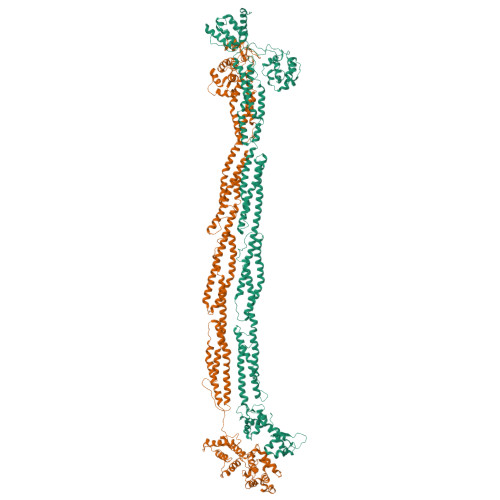A 3-D Reconstruction of Smooth Muscle alpha-Actinin by CryoEm Reveals Two Different Conformations at the Actin-binding Region.
Liu, J., Taylor, D.W., Taylor, K.A.(2004) J Mol Biology 338: 115-125
- PubMed: 15050827
- DOI: https://doi.org/10.1016/j.jmb.2004.02.034
- Primary Citation of Related Structures:
1SJJ - PubMed Abstract:
Cryoelectron microscopy was used to obtain a 3-D image at 2.0 nm resolution of 2-D arrays of smooth muscle alpha-actinin. The reconstruction reveals a well-resolved long central domain with 90 degrees of left-handed twist and near 2-fold symmetry. However, the molecular ends which contain the actin binding and calmodulin-like domains, have different structures oriented approximately 90 degrees to each other. Atomic structures for the alpha-actinin domains were built by homology modeling and assembled into an atomic model. Model building suggests that in the 2-D arrays, the two calponin homology domains that comprise the actin-binding domain have a closed conformation at one end and an open conformation at the other end due to domain swapping. The open and closed conformations of the actin-binding domain suggests flexibility that may underlie Ca2+ regulation. The approximately 90 degrees orientation difference at the molecular ends may underlie alpha-actinin's ability to crosslink actin filaments in nearly any orientation.
Organizational Affiliation:
Institute of Molecular Biophysics, Florida State University, Tallahassee, FL 32306-4380, USA.
















